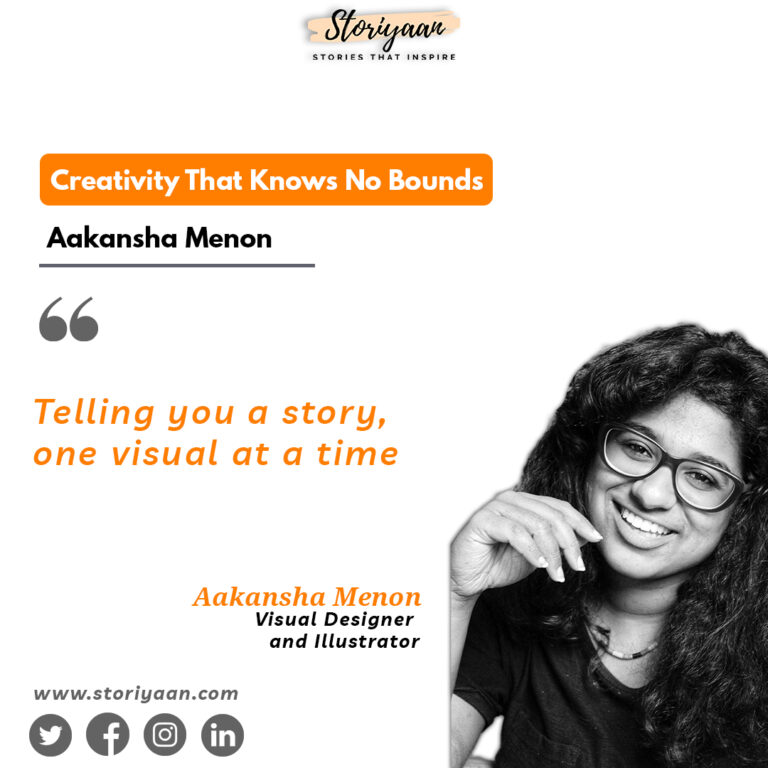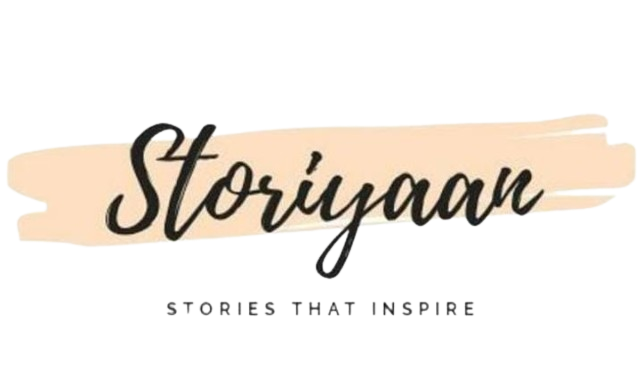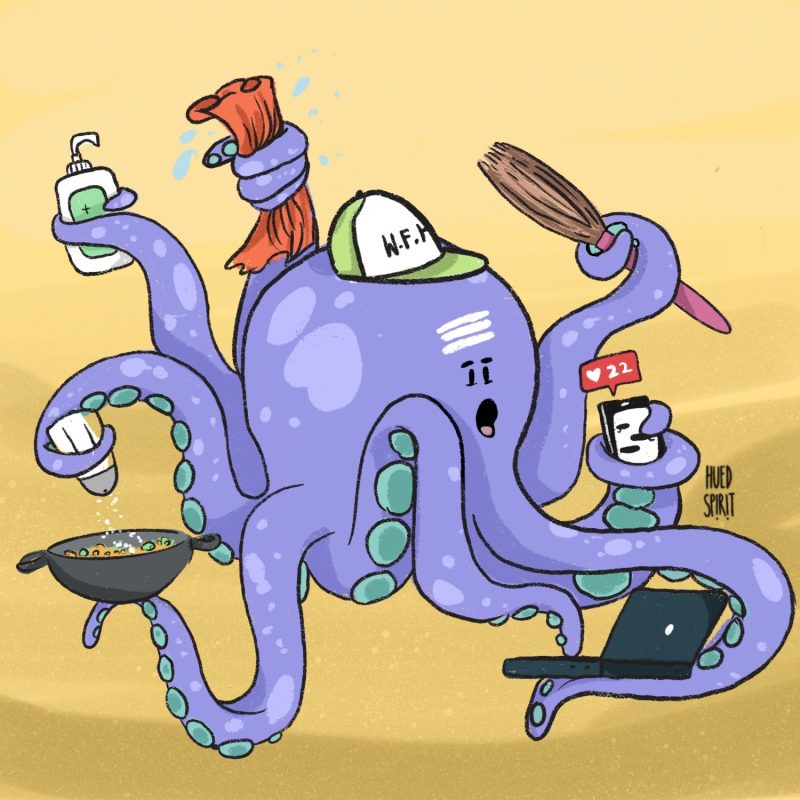However much the world of art and culture fascinates us, very few dare to pursue it as their ultimate aim and career. Aakansha Menon is doing just that with her work as a Visual Designer and Illustrator. She is painting a life of joy with a mix of love and imagination
and envisioning creative growth and change in the forthcoming days. After she graduated from NIFT, she began her creative exploration and has immersed herself in materializing
her thoughts and interests through her gifted talent ever since. Explore this artsy conversation that we at Storiyaan shared with Aakansha.

Interview
Questions and answers
Having been drawing since you were four and sure of the fact that you want to pursue an art career, what was the reaction of your family, provided most Indian households tend to frown upon the idea of their kids not following the mainstream professions?
Fortunately, my family has been well-receptive of my career choice; they appreciated my inclination towards art since childhood. Moreover, I have always been encouraged and supported to pursue any field according to my choice and ambition.
You have worked in a fashion brand for a year after you graduated from NIFT. What were the lessons you took back from that period?
One of the most salient lessons that I learned was to be patient and positive with your work
and allow yourself the time and calm to meet deadlines and work schedules. Additionally,
respecting and admiring everyone no matter their position is another important takeaway for me.
Despite the job being really “exciting and creative”, what propelled you to quit the physical fashion industry and shift to the digital one?
I was steadfast about the projects I wanted to work on but things were not working out as per my expectations and I also wished to explore other fields. This quest for a change drove me to explore digital art and other creative fields and I finally landed on a job in that respect which solidified my shift.
You took a break to explore freelancing full-time in various fields. Can you tell us what fascinated you about photography in the first place and what made you realize that was not your calling?
My interest in photography has stayed with me even today but my love for art and
illustrations superseded my interest in photography. Art took centre stage when I started pursuing it as a full-time job. However, photography is a passion I indulge in my spare hours and find pleasure in it as well.
As a visual designer, what would you consider to be the three best projects in your portfolio and why?
As someone who has worked with several brands and in various fields, it is extremely tough for me to choose any three. One of the reasons I enjoy creating art is because it is notrestrictive to a particular industry – I have worked in a lot of industries and corporates. This results in a vast and varied portfolio, each project best in its way.
It is said that design school never ends, at least for great designers. What is your strategy to learn and grow your knowledge and expertise and to remain updated with the newest trends?
Most of my knowledge is the result of continuous work and engagement with the organization I work for. We have regular conversations on newer techniques or software for illustrations. Along with that, staying updated with courses has helped me immensely
Can you tell us about the most challenging project that you have completed and what did you take back from that experience?
It isn’t particularly a project but sometimes a client’s idea of a design is not workable or presentable yet convincing them otherwise becomes a challenge. As a result, we present a detailed overview of our idea and allow them to scrutinize and compare the given ideas so that they can conclude their want.
What according to you are the fields an upcoming illustrator can explore? Also, what are the skills and qualities that make or break a successful visual designer?
One should start with exploring Photoshop, Illustrator, Procreate and Figma as these are the fundamentals. Having your style and distinct individuality in your designs will help one stand out whereas a lack of experimentation and imagination will result in stagnancy. So, I feel that creative pursuit and change is the key.
When did you first realize your knack for creating comic caricatures and what are some of the sources that you resort to for inspiration?
I enjoyed storytelling and at the same time, I was following popular comic strips or
cartoonist which developed my will and interest to start one of my own. Furthermore, the comical caricatures were extremely fun and gave me a space to explore my creativity beyond the rigid boundaries of a portrait.
My sources of inspiration were Pinterest, illustrators on Instagram and Dribble and with time I figured my style.
Art is an exceptional way of story-telling via illustrations. How do you believe your artistic creations justify the statement and how have you evolved as an artist in your efforts of achieving the same?
Comic strips or graphic novels are a visually appealing form of storytelling; if my idea of the comic and its portrayal is reaching the audience and bringing some visually pleasing content, then I have achieved my goal. My evolution was a slow process from crayons to pen and paper to digital art. Today, designing with software has given me greater flexibility and styles which is revolutionary.
Rapid-fire:
1. Your favourite cartoon show growing up – Tom & Jerry and Scooby-Doo
2. Renaissance or Modern art? – Renaissance although I like both
3. Your most coveted click to date?– Some exemplary bird pictures
4. Your comfort cuisine? – Biryani
5. One show that you have binged recently? – The office

The Story of Hair Care Revolution with Traya
From Struggles to Solutions: There’s Hope For Hair with Traya Hair carries emotions, memories, and stories—of the entangled fingers of loved ones, the tug of

